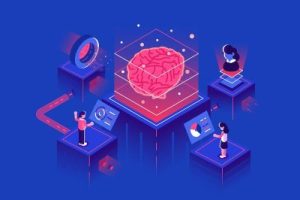
Biometrics are more than facial recognition. Biometrics include all types of biological markers that can be used for identification. Fingerprints pre-date the use of facial recognition and today the practice continues to evolve to use other biological data for a wide variety of use cases.
Tapping into wearable data for first responder safety
The Department of Homeland Security recently funded several startups that have developed innovative monitoring technologies that can be used to protect the health, safety and mental well being of police officers, firefighters, and other emergency responders. These solutions include: Continue reading


 The
The  Machine Learning (ML) and other aspects of Artificial Intelligence (AI) are becoming a critical part of government modernization plans. The fear that "machines will replace people" has largely disappeared. In fact, people see the benefit that ML provides for human workers. ML technology allows machines to do what they are best at - fast computation of large data sets - freeing up humans to do what they do best - analyzing and making sense of the data produced.
Machine Learning (ML) and other aspects of Artificial Intelligence (AI) are becoming a critical part of government modernization plans. The fear that "machines will replace people" has largely disappeared. In fact, people see the benefit that ML provides for human workers. ML technology allows machines to do what they are best at - fast computation of large data sets - freeing up humans to do what they do best - analyzing and making sense of the data produced. In an era where we're often asked to "do more with less," government is finding the need to do more with more when it comes to data. There is no lack of data within government systems. The challenge has always been getting the right access to it and then making it usable. Data can go a long way in helping meet key government-wide goals of better customer experience and increased equity in government service. There are a number of interesting applications of Big Data solutions across government to illustrate the power of data to make a difference.
In an era where we're often asked to "do more with less," government is finding the need to do more with more when it comes to data. There is no lack of data within government systems. The challenge has always been getting the right access to it and then making it usable. Data can go a long way in helping meet key government-wide goals of better customer experience and increased equity in government service. There are a number of interesting applications of Big Data solutions across government to illustrate the power of data to make a difference.
